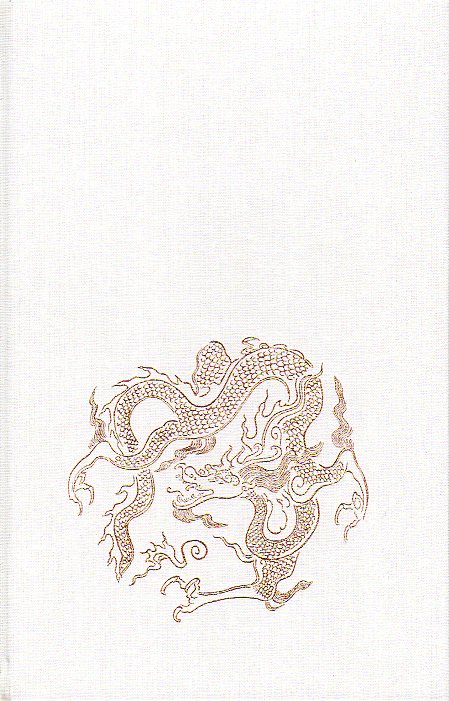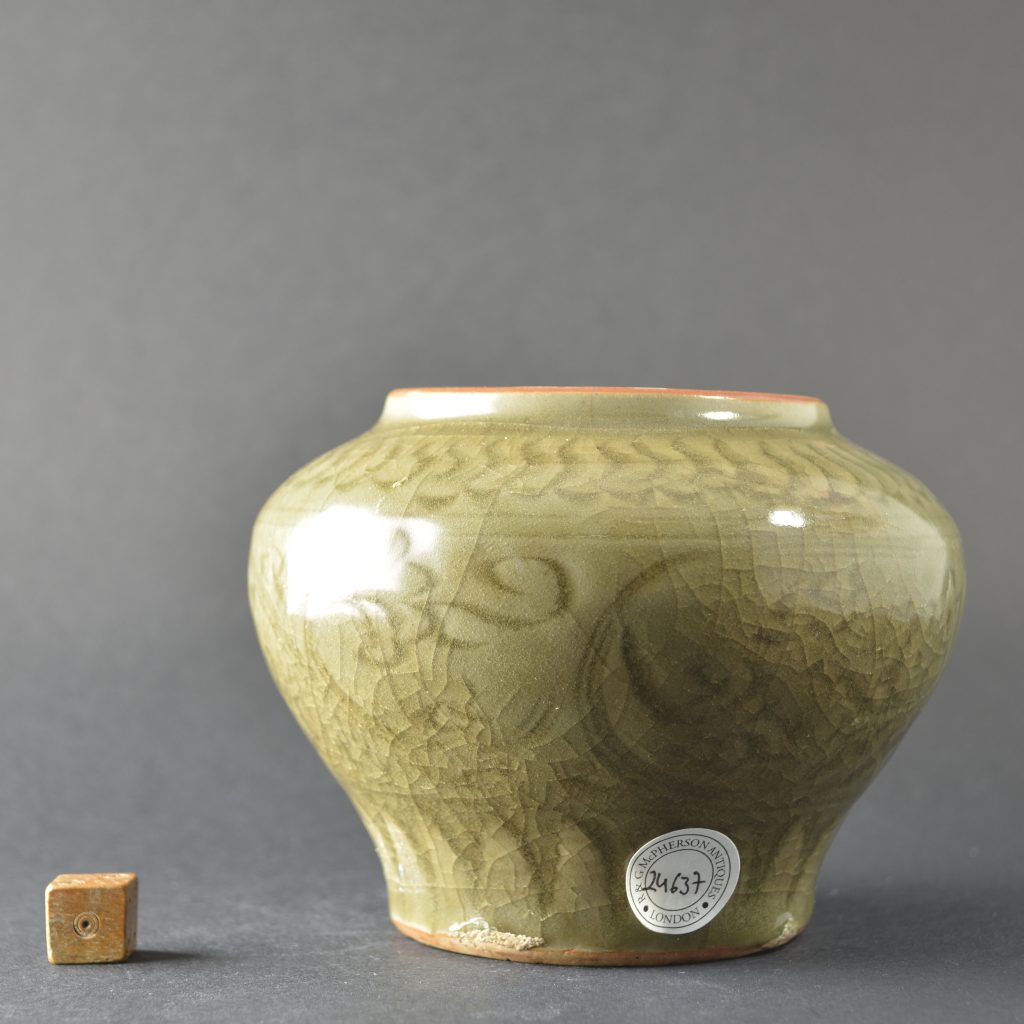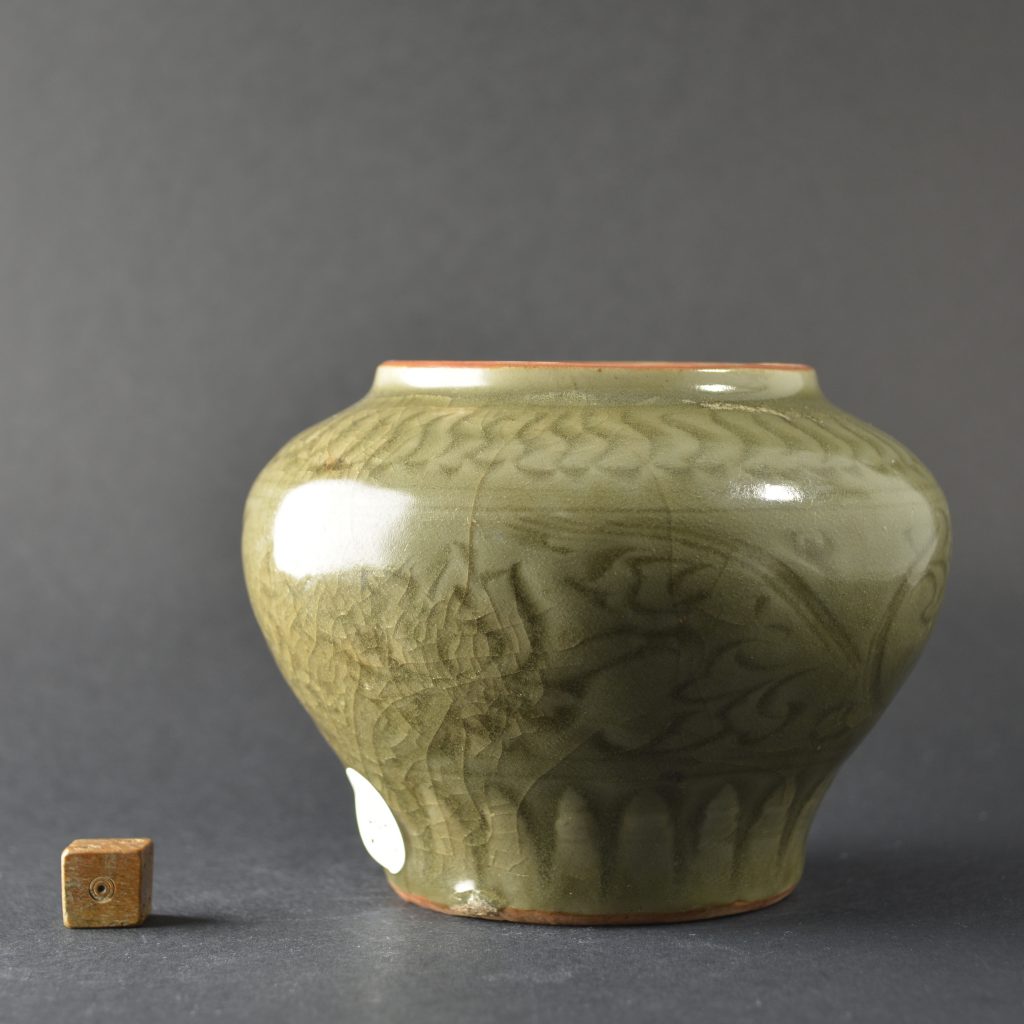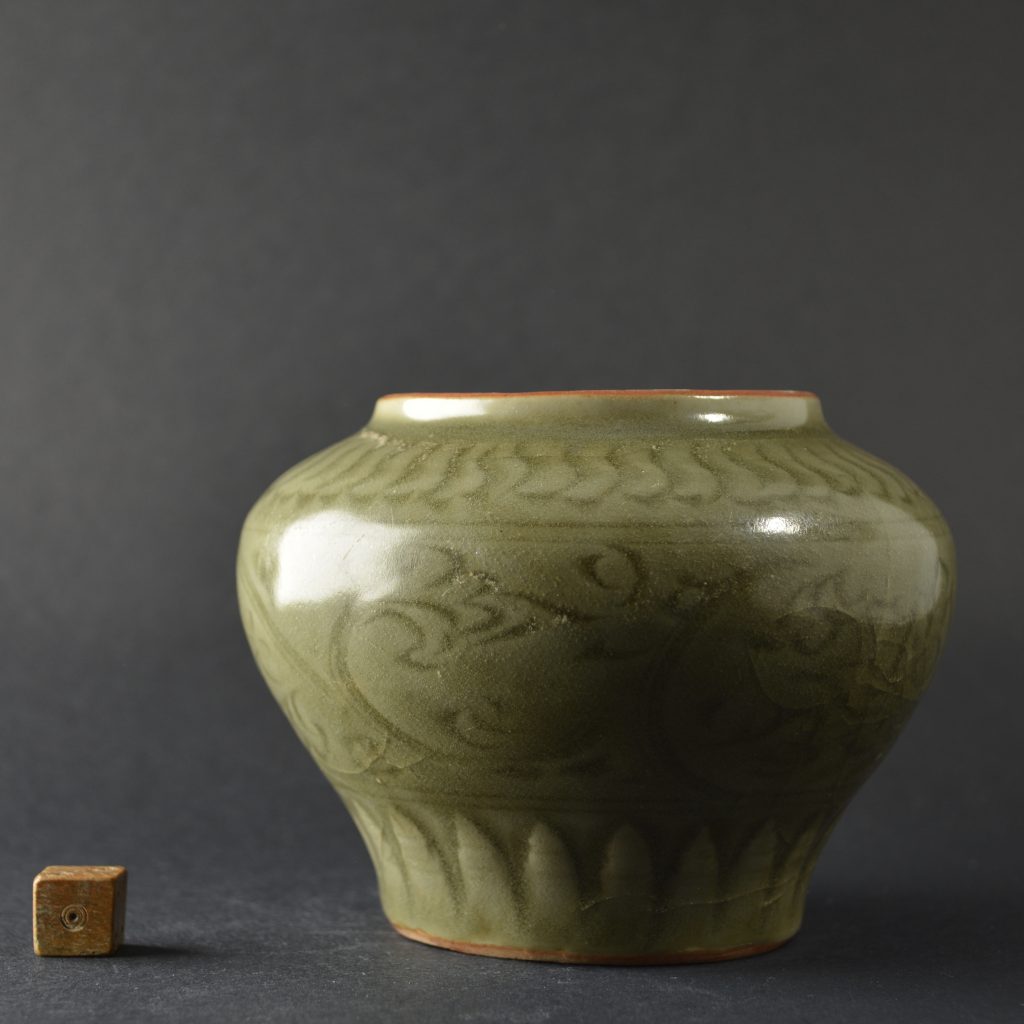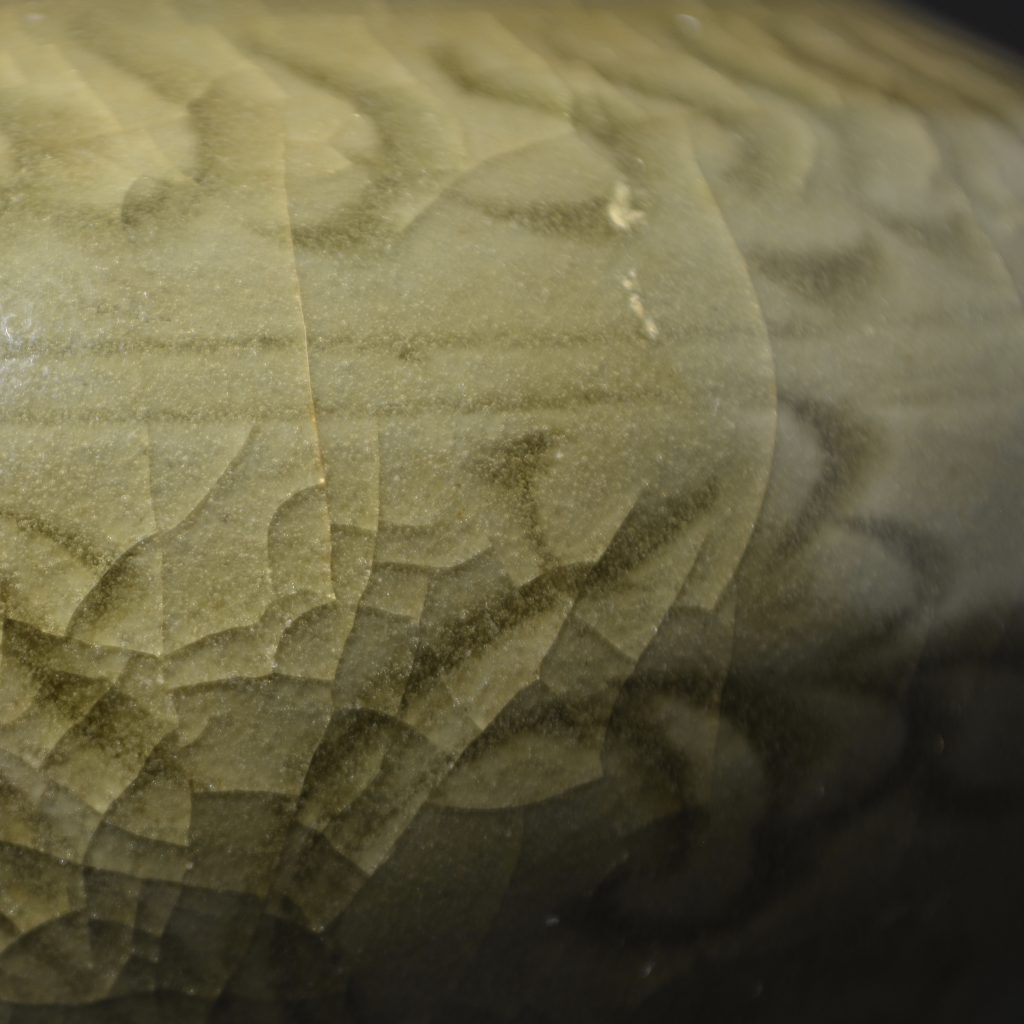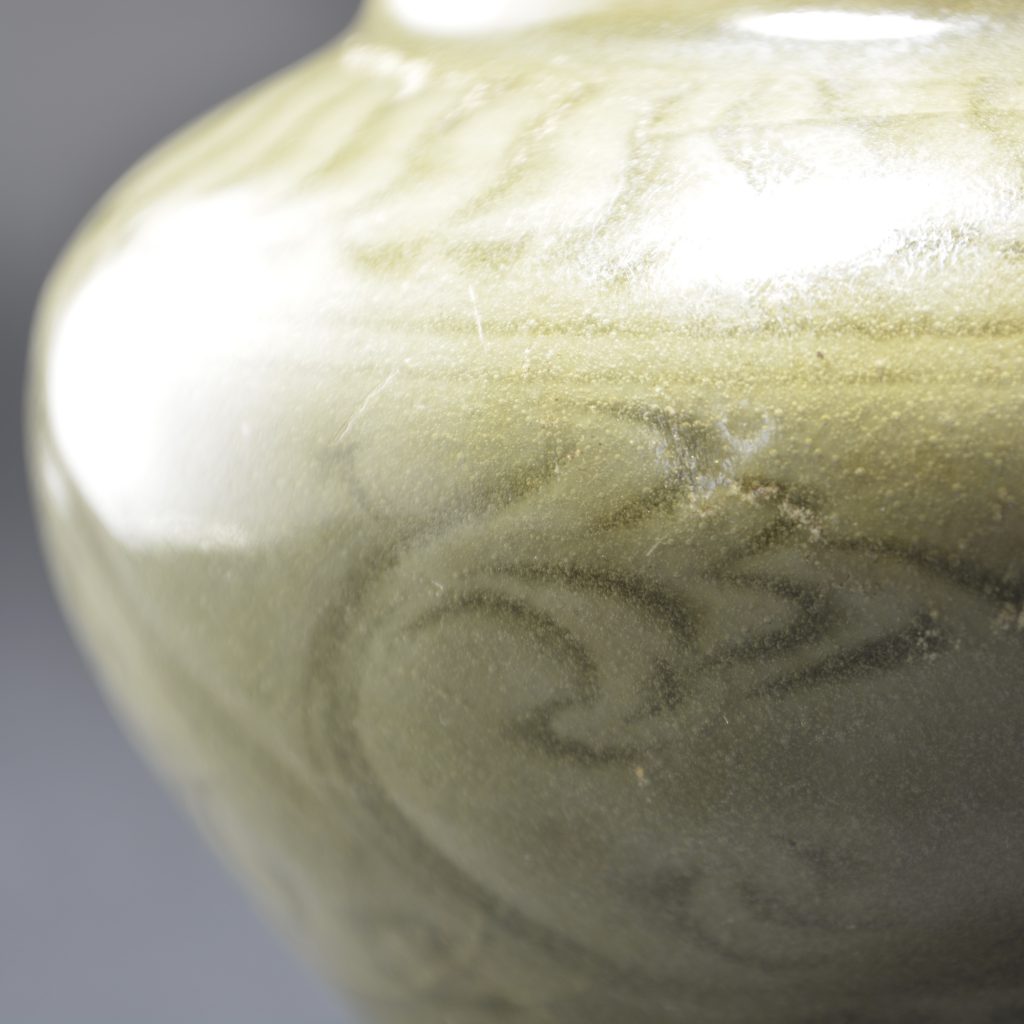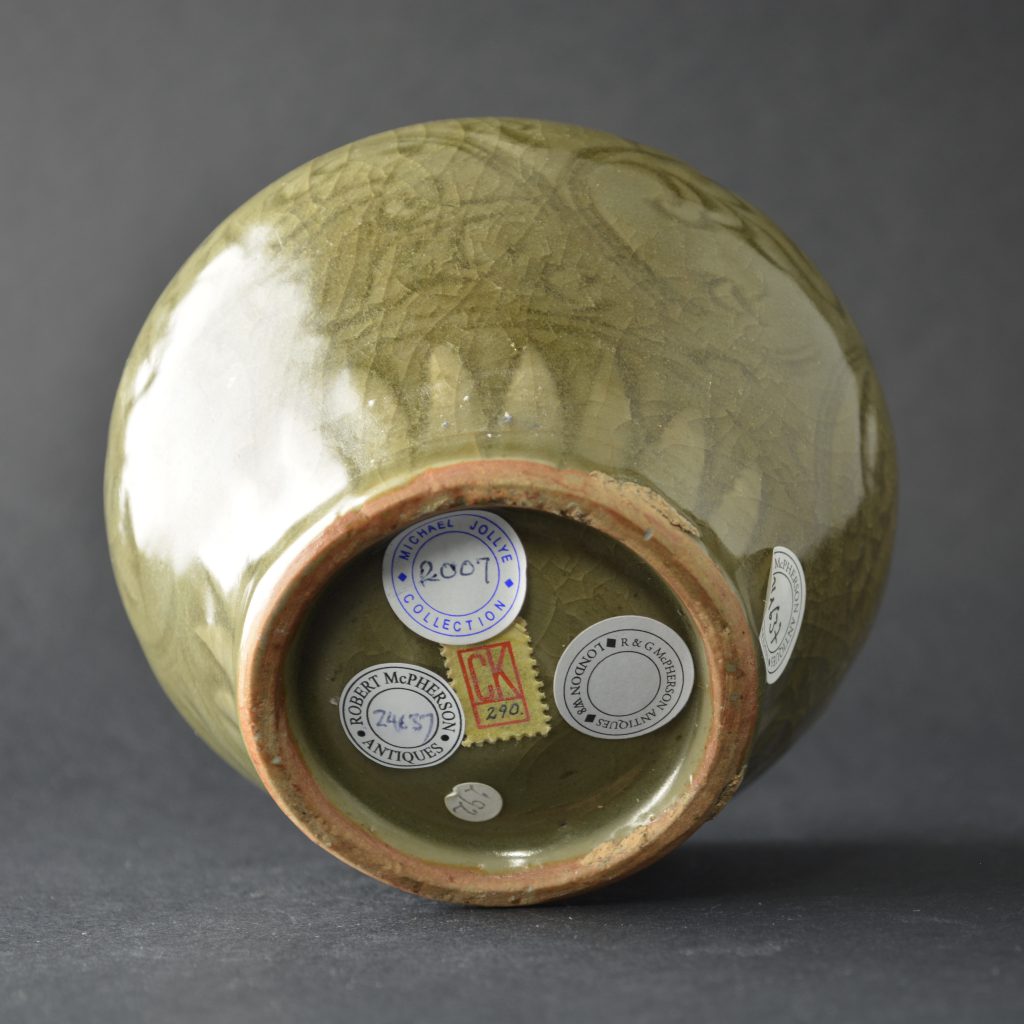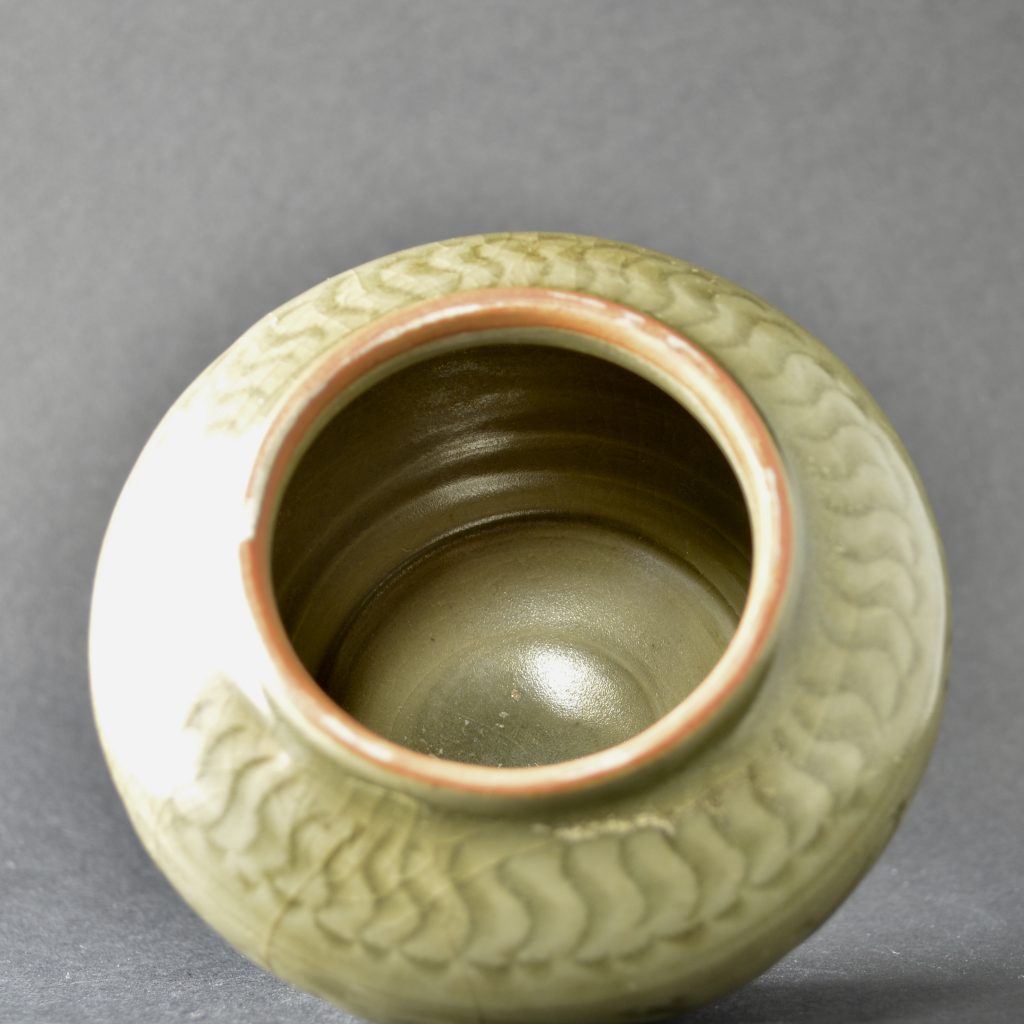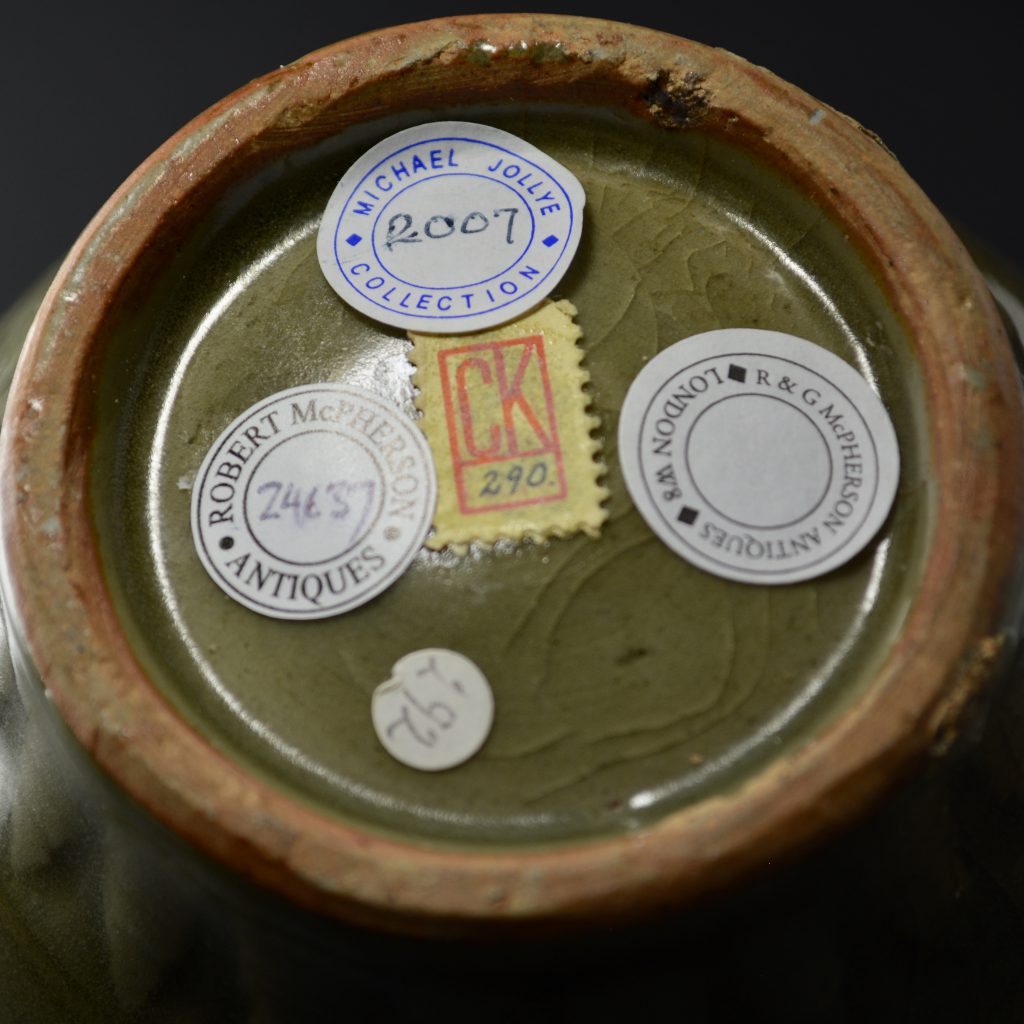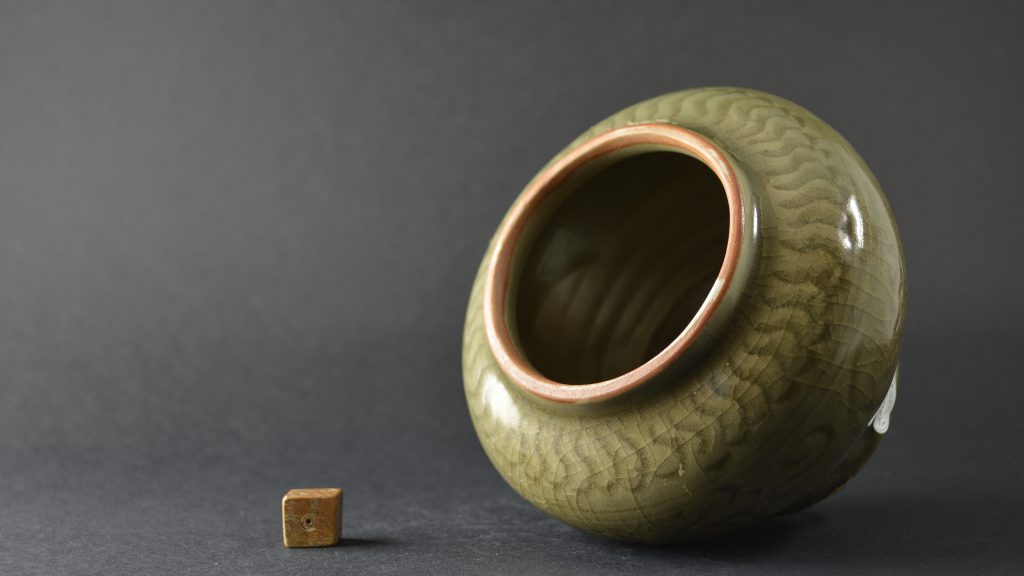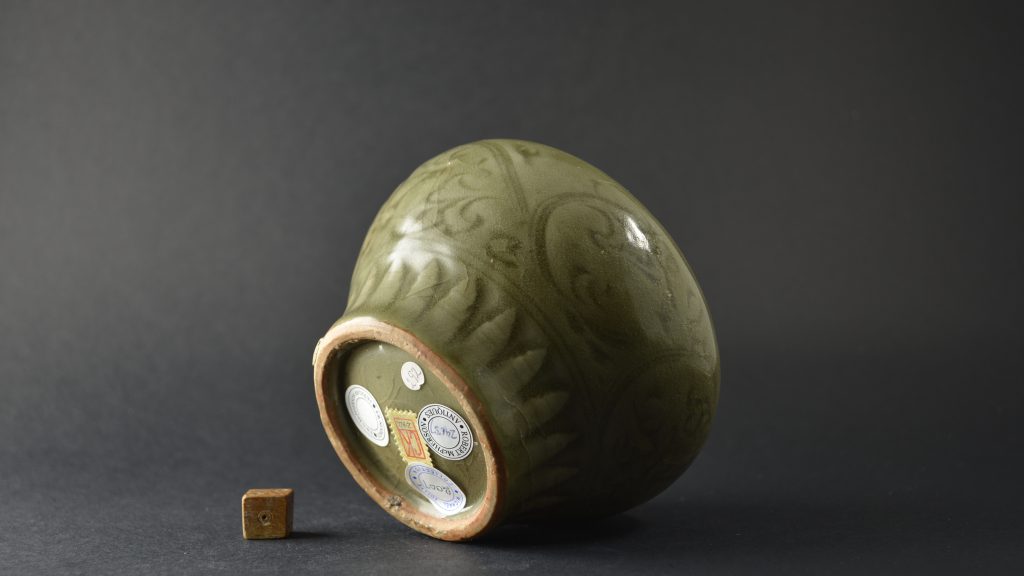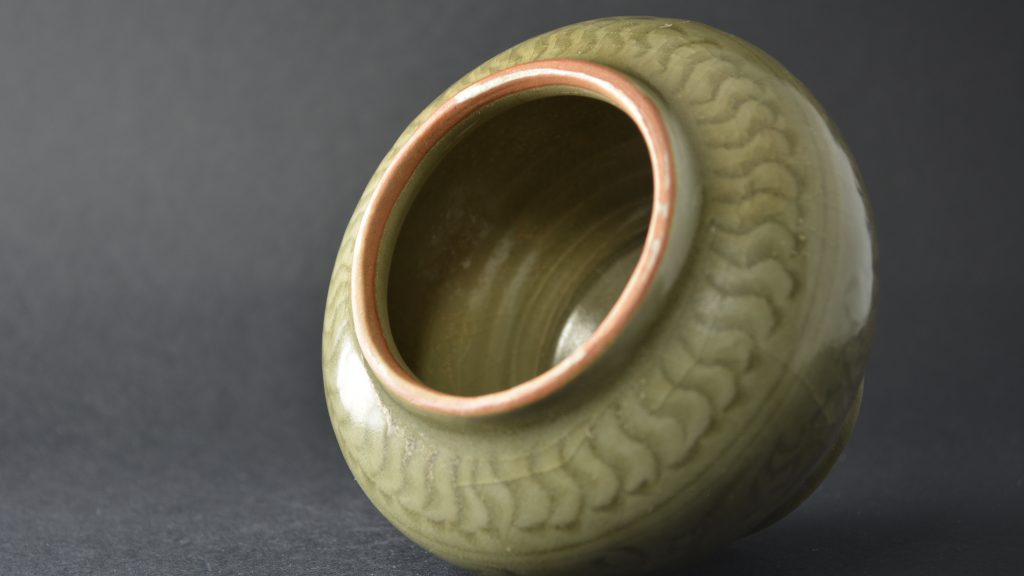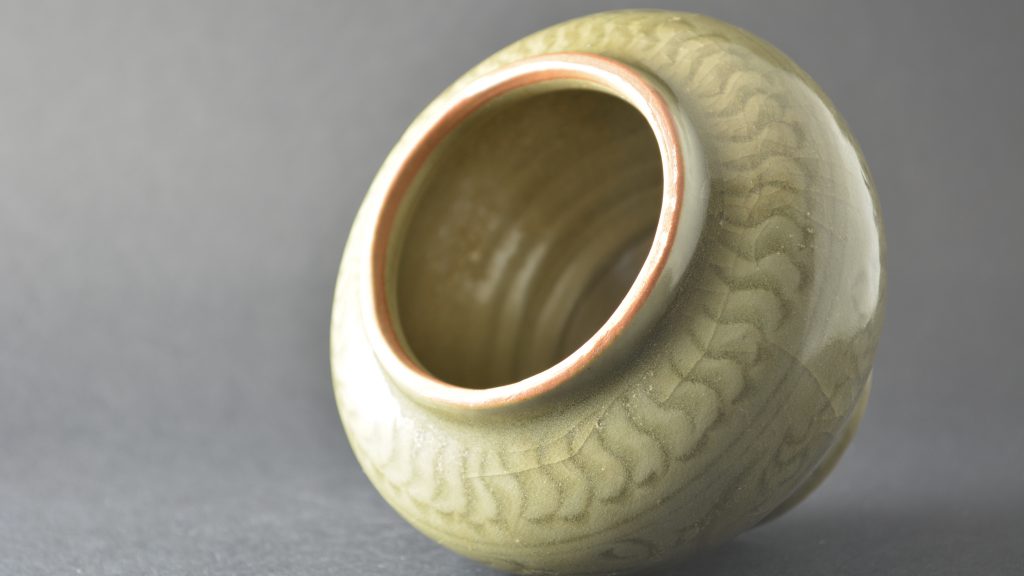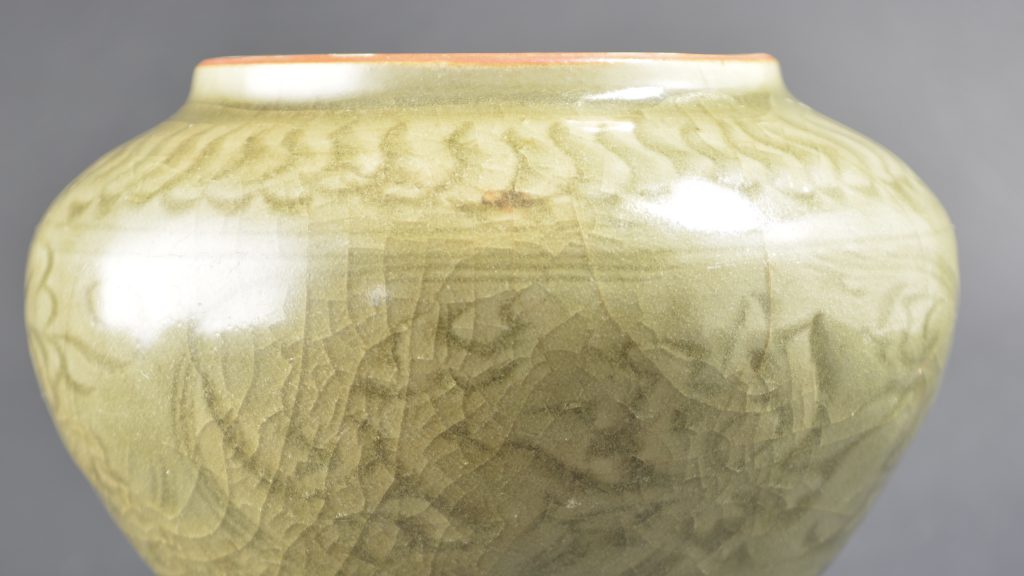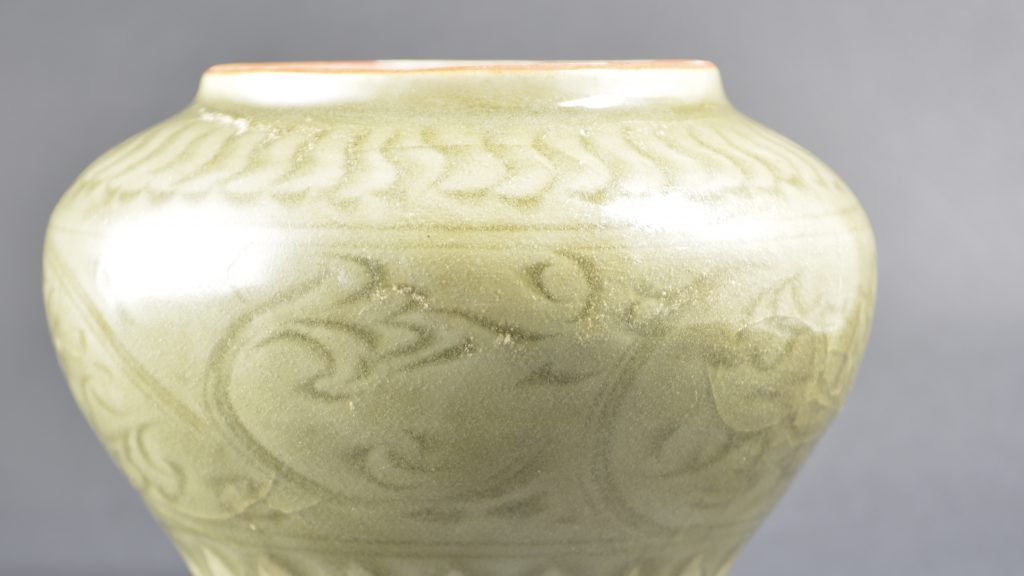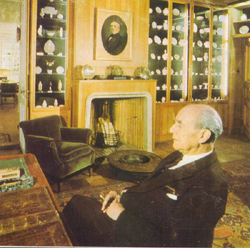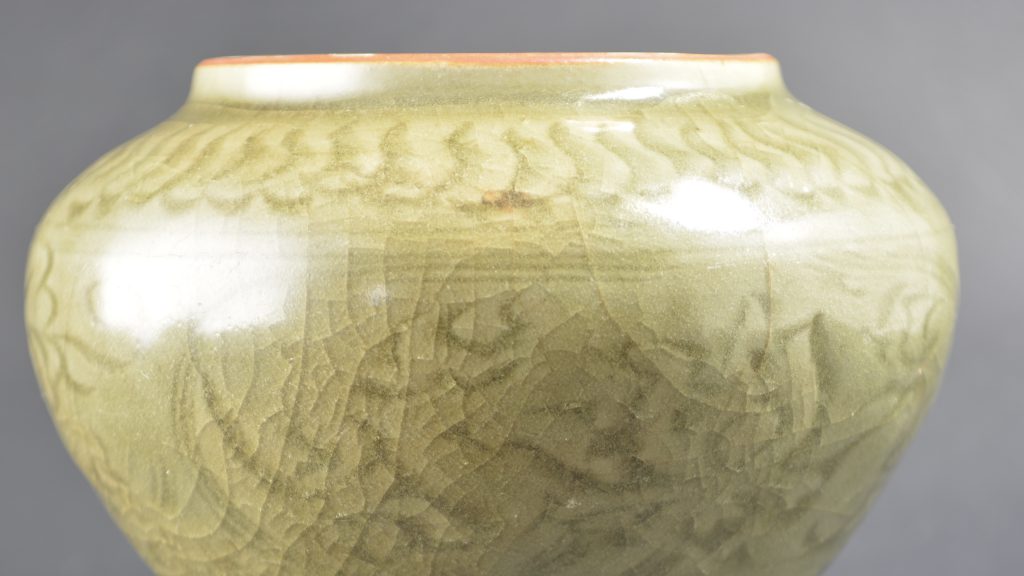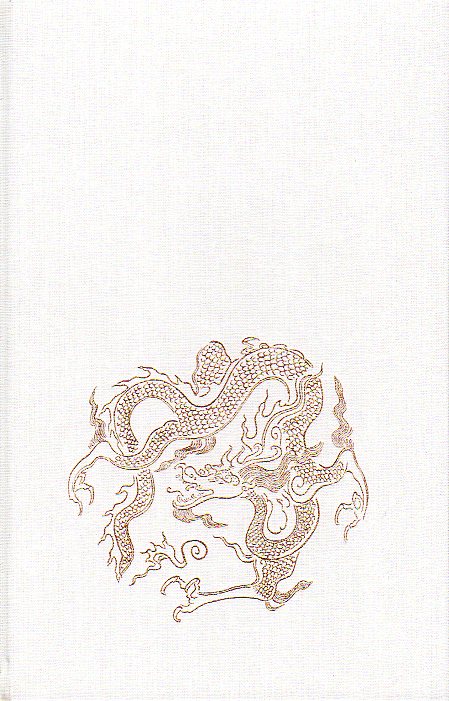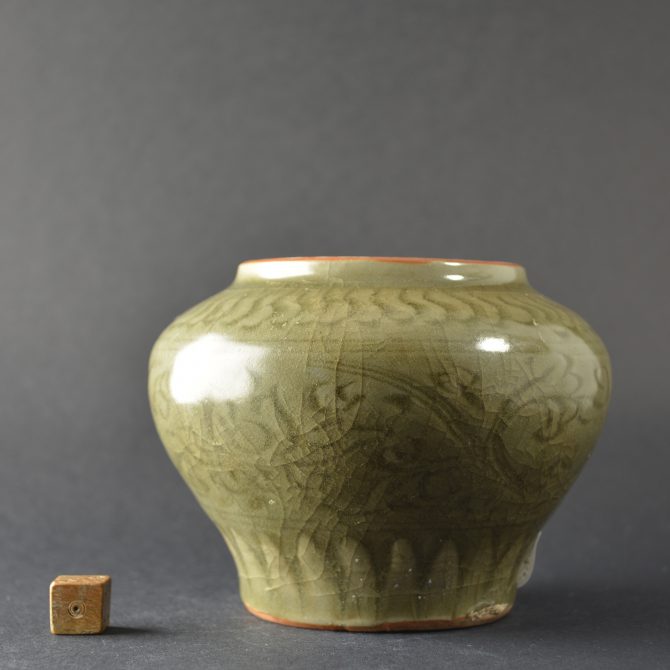
A Ming Celadon Ware Jar 14th or 15th Century
A Ming Celadon Ware jar, Longquan Kilns, late 14th to mid-15th century. This Ming jar from the collection of Dr.Carl Kempe is of typical baluster form and is carved with scrolling lotus. The form is similar to celadon ware from the Song and Yuan dynasties but the carved design as well as the proportions point to an early Ming date.
SOLD
- Condition
- In good condition, the cover is missing, some crackling to the glaze.
- Size
- Height : 8.9 cm (3 1/2 inches)
- Provenance
- The Carl Kempe Collection, Sotheby's, R and G McPherson Antiques, the Michael Jollye Collection of Early Chinese Ceramics.
- Stock number
- 24637
- References
- This Ming jar isIllustrated in : Chinese Ceramics in the Carl Kempe Collection (Bo Gyllensvard, Almqvist & Wiksell, 1964) page 43 plate 70. Described as Northern celadon, Song dynasty. It has since lost it's cover.
Information
Celadon Ware :
Celadon is a term used to describe several types of Chinese stoneware and porcelain, as well a ceramics from other countries, notably from Korea and Japan. The term is a imprecise one, applying to various types of green glazed ceramics, but not all ceramics with green glazes, there are several wares that have a green glaze that are not refereed to as celadon. For example Green Jun and Ge Ware. For this reason there has been a move to try to clarify the situation by using the term `Green Ware`. But for now Celadon is a more familiar and therefore useful term. The origins of the term Celadon are not clear, one theory is that the term first appeared in France in the 17th century and that it is named after the shepherd Celadon in Honoré d`Urfé`s French pastoral romance, L`Astrée (1627), who wore pale green ribbons. (D`Urfe, in turn, borrowed his character from Ovid`s Metamorphoses.) Another theory is that the term is a corruption of the name of Saladin, the Ayyubid Sultan, who in 1171 sent forty pieces of the ceramic to Nur ad-Din, Sultan of Syria. Yet a third theory is that the word derives from the Sanskrit sila and dhara, which mean “stone” and “green” respectively. Celadon ware originated in Zhejiang Province in the Eastern Han Dynasty, however green monochrome glazes can be found on stoneware much before that date. Zhejiang is were the famous Longquan Celadons were made but Celadon wares were also produced at Jiangsu, Hubei, Hunan and Jiangxi. The production of Celadon Ware required a reducing atmosphere of around 1300 degrees C., the colouring agent was a mixture of iron oxide and titanium. The glaze was applied very thickly, and was full of tiny bubbles which defuse the light giving the appearance of richness and softness. Celadon ware originated in Zhejiang Province in the Eastern Han Dynasty, however green monochrome glazes can be found on stoneware much before that date. Zhejiang is were the famous Longquan Celadons were made but Celadon wares were also produced at Jiangsu, Hubei, Hunan and Jiangxi. The production of Celadon Ware required a reducing atmosphere of around 1300 degrees C., the colouring agent was a mixture of iron oxide and titanium. The glaze was applied very thickly, and was full of tiny bubbles which defuse the light giving the appearance of richness and softness.
Dr Carl Kempe 1884 - 1968
Johan Carl Kempe (1884-1967) was a Swedish industrialist who ran a highly successful business. He collected gold and silver, as well as white and monochrome porcelain - areas hitherto relatively ignored. As soon as his collections were catalogued by Bo Gyllensvärd, they came to be internationally recognised as significant reference resources. In 1917 Dr Kempe purchased the magnificent former royal summer palace Ekolsund, where he kept all his diverse collections. His interest in Chinese works of art began during the 1920's and in 1936 Carl Kempe travelled with his wife to China where he obtained around 250 art objects that became the base for his extensive collection. Dr Kempe was a perfectionistic and skillful collector who managed to collect internationally significant Chinese objects in each area of his interest.
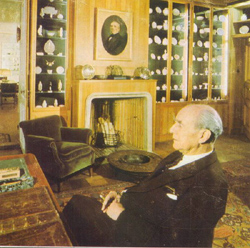
Chinese Ceramics in the Carl Kempe Collection
(Bo Gyllensvard, Almqvist &Co, Wiksell, 1964)
